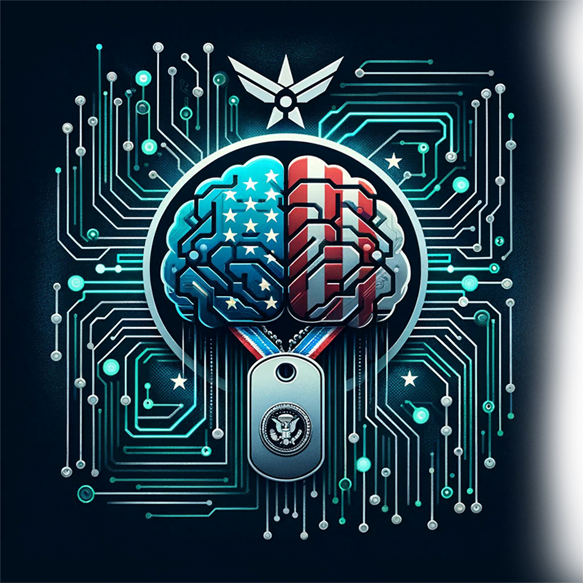
Microservices Architecture Visibility for Security
Why is Microservice architecture critical for visibility into security?
Microservices architecture takes care of the difficulties of productivity and speed by breaking down software applications into flexible services that are quicker to implement and develop. It allows multiple groups of developers to work on various segments of the application concurrently.
Apart from the productivity and effectiveness resulting from microservice architecture when developing an application, it is mandatory to focus on its security. In this article, we will be looking at how the microservice architecture and the security measurements are linked.
What are the existing security threats of the microservice architecture?
1. Distributed nature of microservices
An application that uses the microservice architecture is distributed across multiple data centers, cloud providers, and host machines. Developing infrastructure over multiple cloud environments heightens the risk of losing control of the deployments. In addition, it is difficult to keep a track of the visibility logs of the application components.
Even though the microservices are functioning independently, the application modules are dependent on multiple microservices. For this task, various communication channels are used to transmit data over multiple infrastructure tiers. The appearance of security vulnerabilities within cross-service communication is high as it is skipped and difficult to test during the testing phase
Cloud Computing Technologies AI

Transforming for Innovation, Sustainability and Security
Transforming for Innovation and Sustainability securing future competitive advantage
2. Administration, access control, and data management
The microservices architecture reveals the entry points to local and global users. Unless the accessing tasks are regulated properly, there is a high chance of data getting leaked. In addition, it welcomes cybercriminals to try attacks. For that reason, it is mandatory to add an administrative interface to control users, applications, groups, devices, and APIs from one center. This will give us a clear picture of what’s happening in environments.
Data created within a microservices architecture are continuously modified and interacted with the end-user. Since the data are used for various tasks and stored in various locations, it is difficult to make sure that the data flows are secured and there are no gateways for attackers to enter.
3. The continuous application modifications
Most of the applications and their codebases are changing throughout the software development life cycle due to the appearance of bugs and requirement changes. Hence we cannot guarantee that the modifications applied will not disclose the software application to the new vulnerabilities and attacks.
4. Isolation
Microservices function and work without depending on one another. In addition, each microservice has its own data store if it has to deal with any data. In other words, multiple microservices do not use the same database. When there are many microservices, it is difficult to make sure that all the connections such as API and database are secured. To get rid of this issue, proper security management is needed.
How does the microservices architecture overcome security hurdles?
1. Security portals can be easily implemented
An application using the microservice architecture divides its functionality and tasks into categories and lets microservices perform the tasks. For that reason, the number of tasks and the functionality of each microservice is limited. Therefore each service owns a well-restricted interface.
With this, the security experts are aware of the number of interfaces that they need to take care of and the exact places where the security portal should be implemented. This task is complicated when it comes to a monolithic application as it includes all the functionalities and software components together.
2. Ability to deploy security patches instantly
As discussed in the first section, each microservice has its restricted interface and this makes it easy for the security experts to implement security portals at the exact locations. Once the security portals are established, the experts maintain a record of each security portal and its details. Due to this reason, it makes them easier to deploy security patches instantly when there is a possibility to breach the security.
Furthermore, if a security breach occurs in one of the interfaces, the application will not stop performing as the other services will continue to perform their functions. At the same time, the possibility of that attack being a threat to the entire application and the other services is extremely low.
3. Arrangement of uncomplicated codebases
The software applications with legacy systems include many sets of code sections without a proper structure. This arrangement makes it difficult for a developer to recognize code partitions individually. As a result, if a security error occurs, the possibility of it affecting the entire application is extremely high. In addition, this makes it difficult to figure out the exact reason and place where the error occurs.
The above issue is solved in the microservices architecture. Since the code base is structured properly and divided into distinct executables, the possibility of a security error affecting the entire application is low. The threat will be only linked with the associated module. This will also help to identify the exact reason and place where the error occurs as the codebase structure of microservices architecture helps to track the root cause of the issue.
4. Ability to integrate each service with Tokenization
The microservice architecture of a software application consists of multiple services which give a unique set of features or functionalities to the application. So each service can be integrated with tokenization to enhance security. In other words, tokenization can be integrated with each service and get rid of transmitting personal data.
But if consider a monolithic system, then we can only make use of tokenization once for the entire application. By any chance, if an attacker manages to decode the token of a monolithic system, the entire application is in danger. But this concern can be avoided with the microservice architecture by integrating each service with tokenization.
Microservices Architecture Visibility for Security gives us the opportunity to modularize software applications and make them less complex. Apart from the enhanced productivity of the application and the ability to choose technologies as suited, the ability to overcome the security issues is a significant benefit of the microservices architecture. Security professionals must identify the existing threats of the microservices architecture and overcome them easily.
Generative AI Software Integration
Boost your business efficiency with our custom Generative AI Business Software, tailored for HR, finance, sales, event management, and customer service. Leveraging advanced natural language processing and AI-driven data science, we specialize in customer segmentation, sales analysis, and lead scoring. Elevate your operations and gain a competitive advantage with our precision-driven AI solutions. Contact us to integrate AI seamlessly into your key systems and transform your business.
What clients say about Cloud Computing Technologies
★★★★★ Rated 5 out of 5
"CCT's diverse skills and expertise has reduced our technical debt by millions of dollars to which we have reinvested into future capabilities."

Mrs. Hanson
★★★★★ Rated 5 out of 5
"With CCT migrating our critical systems into the AWS, 80% our staff is now remote working."

Mrs. Miller
★★★★★ Rated 5 out of 5
"CCT showed us how to meeting regulatory compliance in AWS Landing Zone and greatly improved our cloud security controls."

Mrs. Wilson
★★★★★ Rated 5 out of 5
"CCT provided our agency with application rationalization services and successfuly applicaton migrations meeting all KPIs and SLAs."

Federal Agency
★★★★★ Rated 5 out of 5
"I highly recommend the data science team at CCT. They are technically proficient, great communicators, unbiased, and reduced our false positives by 68%."

Mr. Brown
★★★★★ Rated 5 out of 5
"The team at CCT is knowledgable and insightful in developing a cloud architecture leading to our mission success."

Mr. Robinson
Experience and Agile Expertise
you can trust
Years in business
20
Contracts Awarded
180
+
Further information about Microservices Architecture Visibility for Security.
Frequently Asked Questions
Visibility in microservices architecture refers to the ability to monitor and track the behavior and data flow across various independent services. This is critical for security as it helps in detecting anomalies, understanding system performance, and ensuring that all components are functioning as expected. Enhanced visibility enables more effective governance, compliance adherence, and proactive threat detection.
Microservices architecture decentralizes functionality into smaller, manageable units, each with defined boundaries. This setup allows for more granular monitoring and control, providing a clear view of transactions and interactions within each microservice. Consequently, it’s easier to isolate security issues, audit individual components, and implement targeted security measures.
To enhance security visibility in microservices, it’s beneficial to use a combination of logging tools, monitoring solutions, and centralized tracing systems. Tools such as Prometheus for metrics collection, ELK Stack (Elasticsearch, Logstash, Kibana) for logging, and Jaeger for tracing are highly recommended. These facilitate detailed insight into microservices operations and support robust security management.
Yes, incorporating an API gateway can significantly enhance security management in a microservices setup. API gateways act as the entry point for all client requests and can enforce security policies such as authentication, rate limiting, and access controls. They also provide an additional layer of abstraction, which helps in monitoring and securing traffic flow between services.
Microservices face specific security challenges like service spoofing, interservice communication attacks, and complex data management. Enhanced visibility helps in mitigating these risks by providing real-time monitoring of traffic and access patterns, thereby enabling quick detection and response to any malicious activity or policy violation.
Continuous monitoring is paramount in the security framework of microservices due to their dynamic and distributed nature. It ensures ongoing visibility into operations and security events, facilitating immediate response to incidents and continuous improvement of security posture. Implementing automation in monitoring can also help in maintaining the robustness of security measures over time.
IT teams should follow best practices such as implementing comprehensive logging at all levels of operation, using automated tools for event management and anomaly detection, enforcing strict access controls, and regularly reviewing and updating security protocols. Employing a microservices-specific security framework or guidelines can also be highly beneficial.
CloudComputingTechnologies.AI offers expert consultation and tailored solutions to enhance microservices architecture visibility specifically for security purposes. Our seasoned professionals are equipped to implement cutting-edge tools and strategies to safeguard your microservices infrastructure efficiently.
To explore how CloudComputingTechnologies.AI can help in enhancing your microservices architecture for improved security visibility, please call us at (800) 804-9726 or fill out our contact form. We are here to assist you in building a secure, scalable, and robust microservices environment.







